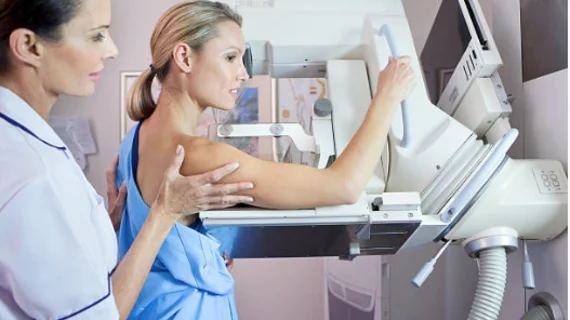New research suggests annual reading volumes between 4,000 and 10,000 mammograms may produce the highest performance among screening programs with independent double reading.
In addition, cumulative reading volumes of more than 20,000 mammograms resulted in peak radiologic performance, according to results of a new study published May 28 in Radiology.
“Several European screening mammography programs that use independent double reading with consensus recommend an annual minimum reading volume of 5000 mammograms per radiologist to ensure high reading performance,” wrote Solveig Roth Hoff, PhD, from the department of radiology at Ålesund Hospital, Møre og Romsdal Hospital Trust in Norway, and colleagues. “However, this recommendation is based only on expert opinion, and, to our knowledge, the influence of reading volume on performance in a screening setting with independent double reading and consensus has not been examined.”
The study involved a retrospective review of 2,373,433 digital mammography exams performed by 121 radiologists as part of the BreastScreen Norway study spanning 2006 to 2016.
Hoff and colleagues utilized multilevel mixed-effects models to examine sensitivity, rate of screening-detected breast cancer (SDC) and false-positive rate before and after consensus meeting in relation to annual and cumulative reading volumes.
The median annual reading volume ranged from 153 to 19,500 scans, and median cumulative reading volume was 30,566 mammograms.
Results showed false-positive rates dropped as reading volumes increased. Prior to consensus meeting the FPR was 5.3% at 100 annual readings and 4% at 4,000 readings, compared to 6.7% at 500 cumulative readings and 3.6% at 20,000 cumulative readings.
Additionally, both sensitivity and SDC rates held steady between 100 and 10,000 annual readings.
Sensitivity and SDC rates fell steadily for annual reading volumes greater than 10,000. This, the authors suggested, could be connected to radiologists’ fatigue experienced at higher workloads.
“To our knowledge, this is the first study analyzing the influence of reading volume on reading performance in a screening program that uses independent double reading of digital mammograms with consensus,” the researchers noted. “Our findings may thus be valuable for establishing evidence-based guidelines on optimal reading volume in such programs.”
One limitation of the study, according to the researchers, is their inability to compare sensitivity and FPR results with studies from single-reading programs—which are most common in the U.S.—due to a different definition of sensitivity.
In a related editorial, Robert D. Rosenberg, MD, with Radiology Associates of Albuquerque in New Mexico and David Seidenwurm, MD, of Sutter Health’s Department of Diagnostic Imaging in Sacramento, Calif., both agreed that the results must be validated cautiously in single-reader systems.
The pair also explored how the study results could be used to tailor three different approaches for optimizing breast cancer screening programs.
And while their recommended approaches along with revised payment structures and technological advancement could undoubtedly help improve breast cancer screening, the authors suggested looking toward the radiologist and patient for the time being.
“For the foreseeable future the greatest gains are likely to be achieved by optimizing the most precious resources in breast cancer screening: the radiologists’ time and our patients’ well-being,” they concluded.

